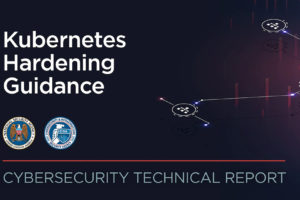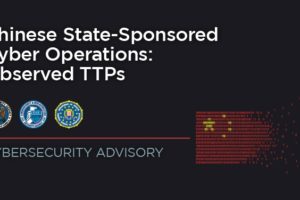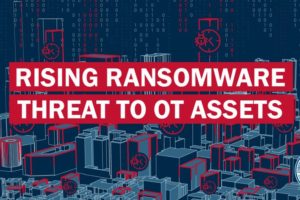NSA, CISA release Kubernetes Hardening Guidance







CISA has released a new module in its Cyber Security Evaluation Tool (CSET): the Ransomware Readiness Assessment (RRA). CSET is a desktop software tool that guides network defenders through a step-by-step process to evaluate their cybersecurity practices on their networks. CSET—applicable to both information technology (IT) and industrial control system (ICS) networks—enables users to perform a comprehensive evaluation of their cybersecurity posture using many recognized government and industry standards and recommendations.
The RRA is a self-assessment based on a tiered set of practices to help organizations better assess how well they are equipped to defend and recover from a ransomware incident. CISA has tailored the RRA to varying levels of ransomware threat readiness to make it useful to all organizations regardless of their current cybersecurity maturity. The RRA:
CISA strongly encourages all organizations to take the CSET Ransomware Readiness Assessment



(Updated May 19, 2021): Click here for a STIX package of indicators of compromise (IOCs).
Note: These IOCs were shared with critical infrastructure partners and network defenders on May 10, 2021. The applications listed in the IOCs were leveraged by the threat actors during the course of a compromise. Some of these applications might appear within an organization's enterprise to support legitimate purposes; however, these applications can be used by threat actors to aid in malicious exploitation of an organization's enterprise. CISA and FBI recommend removing any application not deemed necessary for day-to-day operations.
The Cybersecurity and Information Security Agency (CISA) and the Federal Bureau of Investigation (FBI) are aware of a ransomware attack affecting a critical infrastructure (CI) entity—a pipeline company—in the United States. Malicious cyber actors deployed Darkside ransomware against the pipeline company’s information technology (IT) network. At this time, there is no indication that the
entity’s operational technology (OT) networks have been directly affected by the ransomware.
CISA and FBI urge CI asset owners and operators to adopt a heightened state of awareness and implement the recommendations listed in the Mitigations section of this Joint Cybersecurity Advisory, including implementing robust network segmentation between IT and OT networks; regularly testing manual controls; and ensuring that backups are implemented, regularly tested, and isolated from network connections. These mitigations will help CI owners and operators improve their entity's functional resilience by reducing their vulnerability to ransomware and the risk of severe business degradation if impacted by ransomware.
Darkside Ransomware: Best Practices for Preventing Business Disruption from Ransomware Attacks
(Updated May 19, 2021): Click here for a STIX package of indicators of compromise (IOCs). Note: These IOCs were shared with critical infrastructure partners and network defenders on May 10, 2021. The applications listed in the IOCs were leveraged by the threat actors during the course of a compromise. Some of these applications might appear within an organization's enterprise to support legitimate purposes; however, these applications can be used by threat actors to aid in malicious exploitation of an organization's enterprise. CISA and FBI recommend removing any application not deemed necessary for day-to-day operations.
The Cybersecurity and Information Security Agency (CISA) and the Federal Bureau of Investigation (FBI) are aware of a ransomware attack affecting a critical infrastructure (CI) entity—a pipeline company—in the United States. Malicious cyber actors deployed Darkside ransomware against the pipeline company’s information technology (IT) network. At this time, there is no indication that the
entity’s operational technology (OT) networks have been directly affected by the ransomware.
CISA and FBI urge CI asset owners and operators to adopt a heightened state of awareness and implement the recommendations listed in the Mitigations section of this Joint Cybersecurity Advisory, including implementing robust network segmentation between IT and OT networks; regularly testing manual controls; and ensuring that backups are implemented, regularly tested, and isolated from network connections. These mitigations will help CI owners and operators improve their entity's functional resilience by reducing their vulnerability to ransomware and the risk of severe business degradation if impacted by ransomware.
Mitigations
CISA and FBI urge CI owners and operators to apply the following mitigations to reduce the risk of compromise by ransomware attacks.
- Require multi-factor authentication for remote access to OT and IT networks.
- Enable strong spam filters to prevent phishing emails from reaching end users. Filter emails containing executable files from reaching end users.
- Implement a user training program and simulated attacks for spearphishing to discourage users from visiting malicious websites or opening malicious attachments and reenforce the appropriate user responses to spearphishing emails.
- Filter network traffic to prohibit ingress and egress communications with known malicious IP addresses. Prevent users from accessing malicious websites by implementing URL blocklists and/or allowlists.
- Update software, including operating systems, applications, and firmware on IT network assets, in a timely manner. Consider using a centralized patch management system; use a risk-based assessment strategy to determine which OT network assets and zones should participate in the patch management program.
- Limit access to resources over networks, especially by restricting RDP. After assessing risks, if RDP is deemed operationally necessary, restrict the originating sources and require multi-factor authentication.


The Cybersecurity and Infrastructure Security Agency (CISA) announced the formation of a Space Systems Critical Infrastructure Working Group, a mix of government and industry members that will identify and develop strategies to minimize risks to space systems that support the nation’s critical infrastructure. The Working Group will operate under the Critical Infrastructure Partnership Advisory Council (CIPAC) framework, bringing together space system critical infrastructure stakeholders.
The critical infrastructure on which the United States depends relies on space systems. Increasing the security and resilience of space systems is essential to supporting the American people, economy, and homeland security.
“Secure and resilient space-based assets are critical to our economy, prosperity, and our national security,” said CISA Acting Director Brandon Wales. “This cross sector working group will lay the foundation for our collective defense against the threats we face today and in the future.”
This working group will serve as an important mechanism to improve the security and resilience of commercial space systems. It will identify and offer solutions to areas that need improvement in both the government and private sectors and will develop recommendations to effectively manage risk to space based assets and critical functions.
The working group is co-chaired by Jim Platt, Chief, Strategic Defense Initiatives, CISA and John Galer, Assistant Vice President, National Security Space, Aerospace Industries Association. Current members represent government and industry organizations from the communications, critical manufacturing, defense industrial base, information technology, and transportation sectors, including leading-edge satellite and space asset infrastructure firms with expertise in emerging technology areas.